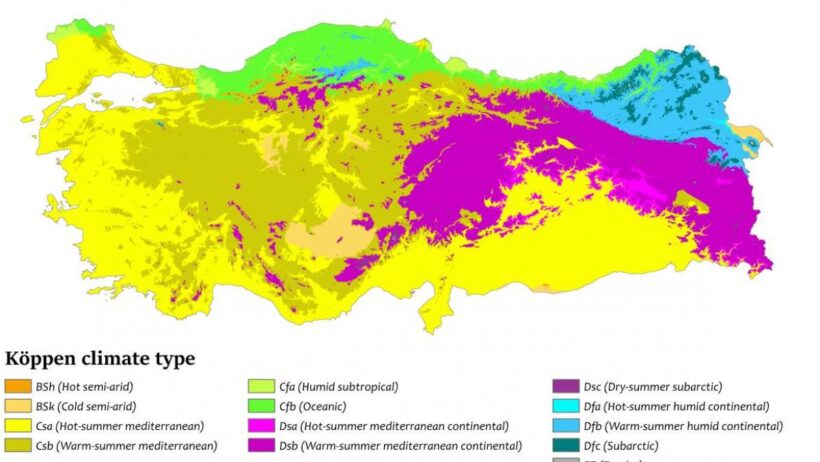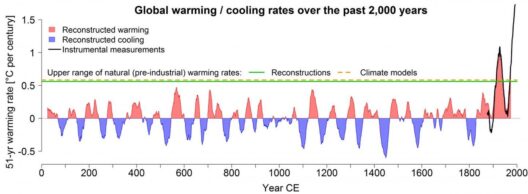Turkey, a transcendent crossroads between Europe and Asia, holds an intriguing tapestry of climatic conditions shaped by its geographical variation and topography. The region’s climate is not merely a static element; it is an atmospheric narrative, one that weaves together vital elements from the surrounding Mediterranean, continental, and oceanic influences. This intricate interaction creates diverse weather patterns throughout the year, captivating the imagination and illuminating the significance of Turkey’s climate in the context of global climate change.
The climatic zones of Turkey can broadly be categorized into four primary types: Mediterranean, continental, oceanic, and mountainous. Each of these contributes to the nation’s rich biodiversity while also presenting unique challenges exacerbated by climate variability.
To commence this exploration, an examination of Turkey’s Mediterranean climate, particularly along the coastal regions, is imperative. Characterized by mild, wet winters and hot, dry summers, this region thrives with a plethora of flora and fauna. The aegis of the Mediterranean Sea gently tempers extreme temperatures, allowing agriculture to flourish. The cultivation of olives, grapes, and citrus fruits underscores the ecological advantages provided by this climatic zone. However, the Mediterranean region is increasingly vulnerable to the effects of climate change, notably the escalating incidence of drought and heatwaves. The once predictable seasonal shifts are morphing, urging a collective reconsideration of agricultural practices and water management.
Transitioning from the balmy coasts, the central Anatolian plateau introduces a continental climate, distinguished by its stark temperature oscillations. Winters are frigid, while summers can be swelteringly warm, interspersed with minimal rainfall. This climatic dichotomy shapes the cultural and economic landscape, including the traditional pastoral lifestyle prevalent in the hinterlands. The profound seasonal differences are not merely an environmental footnote; they dictate lifestyle choices, economic activities, and even migration patterns within the country. Farmers are challenged to adapt to these climatic extremes, experimenting with drought-resistant crops and innovative irrigation techniques to sustain their livelihoods.
Venturing further eastward reveals the mountainous regions of Turkey, where climate dynamics shift dramatically yet again. The elevation creates a microclimate effect, fostering a unique biosphere marked by heavy snowfalls in winter and lush greenery in summer. The Eastern Anatolia region experiences harsh winters, and many villages are isolated by snow-covered peaks for months. Here, one can witness nature’s resilience; yet, the shift in weather patterns is rendering traditional snow-reliant economies precarious. Communities are grappling with the consequences of melting glaciers and diminished snowfall, which disrupt hydrology and threaten water availability downstream.
Turkey’s climate not only elucidates variations in weather patterns but also serves as a reflection of the pressing global climatic conundrum. The convergence of various climatic influences within Turkey serves as an illustrative microcosm of the broader shifts occurring worldwide. The phenomenon of climate change manifests in the form of unpredictable weather, rising temperatures, and the disruption of long-established ecosystems. As the seasons evolve, the question remains: how can societies adapt to an increasingly unpredictable climate?
An environmental imperative arises from Turkey’s unique position. The country’s geography creates both opportunities and vulnerabilities, amplifying the urgency for robust climate action. The promise of altering perspectives on climate intricately intertwines with cultural identity and national sustainability. For instance, the burgeoning field of ecotourism has the potential to educate tourists on the delicate balance of Turkey’s ecosystems while economically benefiting local communities. By investing in sustainable tourism practices, stakeholders can help revitalize endangered habitats, ensuring they endure for future generations.
Moreover, the aspect of renewable energy sources looms large in discussions surrounding climate resilience. As Turkey embraces its geographical fortitude, it is increasingly exploring solar and wind potential. The expense of fossil fuels, coupled with their environmental repercussions, has led to a reevaluation of energy strategies. This transformation holds promise for not only reducing greenhouse gas emissions but also fostering energy independence. Moving toward a renewable energy economy provides both a challenge and an opportunity for innovative technology, collaboration, and enforcement of sustainable practices.
The cultural implications of climate change cannot be overlooked. Turkey’s rich heritage is interwoven with the land and its climate. Traditional practices have evolved alongside ecological parameters, emphasizing the need for cultural adaptability in the face of change. Whether through the resilience of local agricultural methods or the preservation of ancient environmental knowledge, the synergy between climate and culture is profound. Such interconnectedness can become a bastion of strength as communities seek solutions to mitigate the impacts of climate change.
In conclusion, Turkey’s climate is emblematic of a world in flux, where continents and seasons converge to sculpt a unique environmental narrative. The diverse climatic zones offer glimpses into the ramifications of climate change, serving as a portent for the future. Embracing a paradigm shift—one that cherishes environmental stewardship and harnesses sustainable practices—is imperative. The climate in Turkey invites curiosity and introspection, urging individuals and communities alike to recognize their role in a larger ecological tapestry. As Turkey stands at the crossroads, it beckons global contemplation on living harmoniously within our changing climate.








